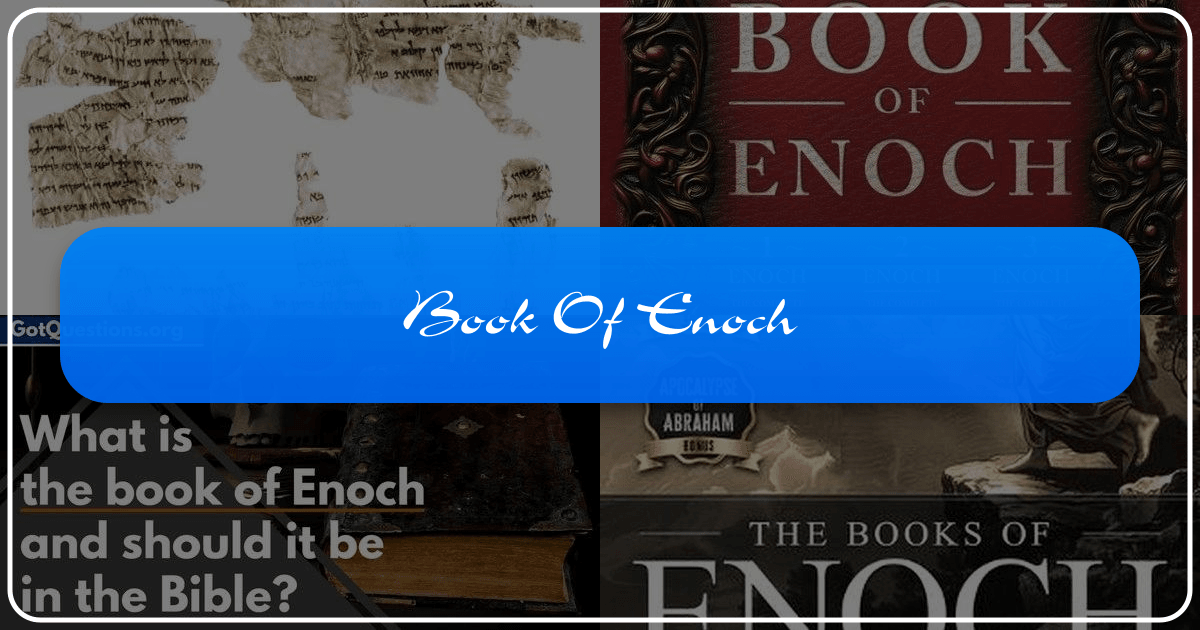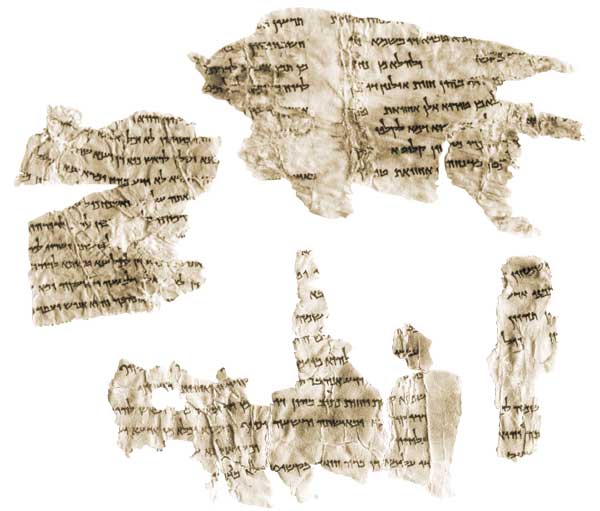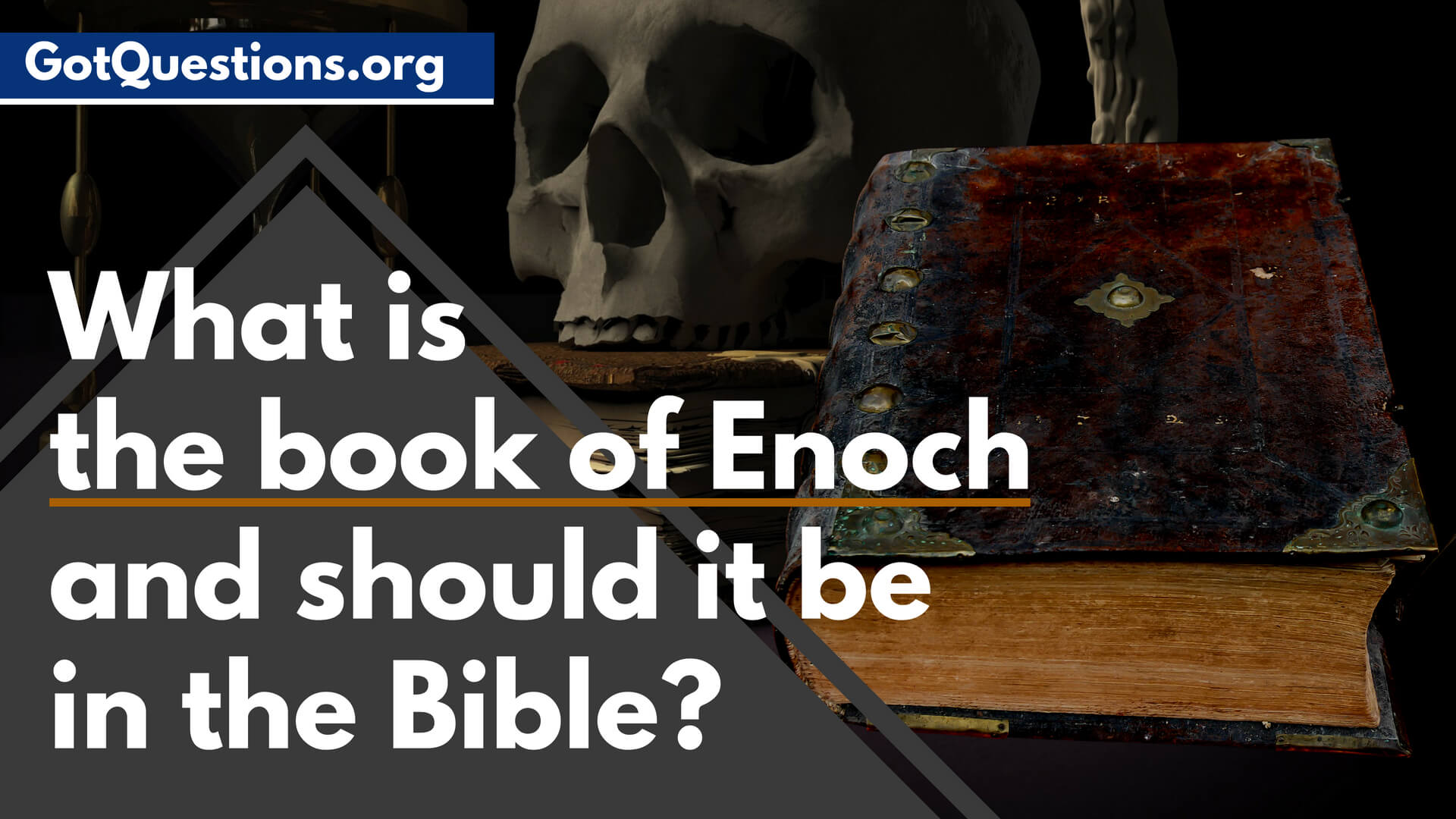The Book of Enoch: An Exploration Across Genres and Cultures

The Book of Enoch, also known as 1 Enoch, stands as a significant yet non-canonical text within both Jewish and Christian traditions. Its complex history, diverse content, and lasting influence make it a fascinating subject for study across various disciplines, from religious studies and biblical scholarship to literary analysis and cultural history. This exploration will delve into the Book of Enoch, examining its content, authorship, historical context, and enduring impact, organized according to key themes relevant to literature, history, and religious studies.
The Literary Landscape of Enoch
The Book of Enoch is not a unified work but rather a collection of distinct texts, each with its own literary style, thematic focus, and likely author(s). This multifaceted nature complicates efforts to definitively date and attribute the entire compilation. Scholars generally divide 1 Enoch into five main sections:
1. The Book of the Watchers (1 Enoch 1–36)

This section recounts the “fall of the Watchers,” angels who disobeyed God by taking human wives and fathering the Nephilim, hybrid beings of angelic and human descent. The narrative blends mythological elements with apocalyptic pronouncements of divine judgment. The style is characterized by vivid imagery, dramatic dialogues, and a sense of cosmic upheaval. The Watchers’ actions are presented as the source of much of the world’s wickedness and suffering, a theme that resonates in later apocalyptic traditions. The inclusion of Enoch’s journeys through the heavens and his encounters with celestial beings adds a visionary, otherworldly dimension to the narrative.
2. The Book of Parables of Enoch (1 Enoch 37–71)

This section, often considered the most theologically significant, introduces the “Son of Man” figure, a messianic figure with divine attributes who plays a central role in the final judgment. The literary style shifts towards more complex, allegorical parables, employing vivid imagery and symbolic language to convey theological concepts. The “Son of Man” motif, unique to this section of Enoch, has been a subject of intense scholarly debate regarding its relationship to the early Christian use of the same title for Jesus. The dating of this section is particularly contentious, with scholarly opinions ranging from the late Second Temple period to as late as the 3rd century CE. The absence of this section in the Qumran fragments further fuels this debate.
3. The Astronomical Book (1 Enoch 72–82)
This section details Enoch’s celestial visions, focusing on astronomical observations and the arrangement of the heavens. The style is more descriptive and technical, detailing the movements of heavenly bodies and providing what scholars interpret as an ancient calendar system. The cosmological insights, described by Uriel to Enoch, demonstrate a deep interest in the workings of the universe and the order established by God. This attention to cosmic order contrasts with the chaos introduced by the fallen angels in the Book of the Watchers.

4. The Book of Dream Visions (1 Enoch 83–90)
This section presents two dream visions offering an allegorical history of Israel. The dream visions depict Israel’s history from its earliest days to a future messianic age, using symbolic language and imagery. Animals often represent nations or groups of people, allowing for a more oblique and symbolic narrative strategy. The interpretation of these symbols and the historical events they refer to remains a subject of ongoing scholarly discussion. It is often argued that the second vision hints at historical events during the time of the Maccabean revolt.
5. The Epistle of Enoch (1 Enoch 91–108)
This final section takes the form of a series of exhortations, admonitions, and pronouncements of judgment addressed by Enoch to his son Methuselah. The style is didactic and moralistic, emphasizing the importance of righteousness and the consequences of wickedness. The section includes apocalyptic visions of future events, including a vision of the final judgment. The Epistle also introduces elements of divine wisdom and guidance, offering a moral and spiritual framework.
Authorship and Historical Context
The Book of Enoch’s composite nature complicates discussions of authorship. The diverse sections likely reflect the work of multiple authors writing over several centuries. While traditionally ascribed to Enoch, the great-grandfather of Noah, it’s widely accepted that this attribution is pseudepigraphical—a literary convention where a later author writes under the name of a respected earlier figure to lend authority to their work. The oldest extant fragments of Enoch date from the Second Temple period (roughly 586 BCE to 70 CE), aligning with the period in which the Dead Sea Scrolls were created. However, the inclusion of material relating to events from the first century BCE to the first century CE suggests that the collection likely underwent multiple stages of redaction and expansion over an extended timeframe. The original language(s) of Enoch is another area of debate, with Aramaic and Hebrew among the possibilities; the complete book only survives in an Ethiopic translation.
Educational Value and Life Lessons
Despite its non-canonical status, the Book of Enoch provides valuable insight into the worldview and beliefs of ancient Jewish and early Christian communities. Studying the text offers several educational benefits:
- Understanding Apocalyptic Literature: The Book of Enoch serves as an important example of apocalyptic literature, a genre characterized by visions of the end times, divine judgment, and the triumph of good over evil. Its exploration of these themes provides context for similar themes found in later apocalyptic writings, including the Book of Revelation.
- Exploring Angelic and Demonic Traditions: Enoch offers rich insights into the Jewish and early Christian understanding of angels and demons, their roles in the cosmic drama, and their influence on human affairs. The descriptions of the Watchers and their rebellion against God provides valuable insight into these theological ideas.
- Examining Eschatological Beliefs: The Book of Enoch provides a profound look at eschatological views, including the concepts of the final judgment, the resurrection, and the messianic age. It reveals the complexities of these beliefs and their evolution through time.
- Appreciating Ancient Literary Styles: By analyzing the Book of Enoch’s diverse literary styles—from narrative and apocalyptic visions to allegorical parables and ethical exhortations—students gain a deeper understanding of ancient literary techniques and the way authors used them to convey their message.
- Considering Canonical Debates: The non-canonical status of Enoch highlights the ongoing debates surrounding biblical canon formation and the criteria used to determine which texts are considered sacred scripture.
The Book of Enoch in Libraries and Archives
The Book of Enoch’s manuscripts are scattered across various libraries and archives around the world, reflecting its complex history of transmission. The most complete versions are found in Ethiopic manuscripts, housed in libraries and religious institutions in Ethiopia, Europe, and other parts of the world. Fragments of Aramaic Enoch have been recovered from the Dead Sea Scrolls, now curated in Israel. Various other fragments exist in Greek, Coptic, Latin, and Syriac, preserved in various collections. The study of these different manuscript traditions is crucial for textual criticism and for understanding the evolution of Enochian literature. Digital libraries provide increasing access to digitized versions, although scholarly editions still remain the most reliable versions.
Cultural Impact and Legacy
The Book of Enoch has had a significant impact on both Jewish and Christian thought and culture, despite its non-canonical status. It has been interpreted in a variety of ways throughout history and continues to exert considerable influence.
- Influence on New Testament Theology: The New Testament, particularly the Epistle of Jude, directly cites the Book of Enoch, indicating its familiarity among early Christian circles. The “Son of Man” figure in Enoch’s parables has been seen as potentially impacting the understanding of the messianic figure within the New Testament.
- Development of Apocalyptic Thought: The Book of Enoch’s profound exploration of apocalyptic themes, including the end times and divine judgment, directly influenced later apocalyptic writings and contributed to shaping the apocalyptic tradition within both Jewish and Christian thought.
- Impact on Jewish Mysticism: The Book of Enoch’s rich descriptions of the heavenly realms and its insights into angelic and demonic hierarchies have had a profound effect on the development of Jewish mysticism, influencing later Kabbalistic traditions.
- Ethiopian Orthodox Canon: The enduring presence of the Book of Enoch within the Ethiopian Orthodox Tewahedo Church canon underlines its ongoing theological significance and its integration into that particular liturgical and theological tradition.
- Modern Interpretations: Modern scholarship continues to analyze the Book of Enoch’s literary, historical, and theological significance, leading to renewed interest and debate about its contents and impact. The recovered Dead Sea Scrolls have been instrumental in providing new insight into its textual history and ancient understanding.
In conclusion, the Book of Enoch is far more than a historical curiosity; it offers a dynamic portal into ancient religious thought, exploring complex themes of sin, judgment, cosmology, and redemption that continue to resonate with readers today. Its multifaceted nature and complex textual history necessitate detailed scholarly study and interpretation, while its ongoing presence within Ethiopian Christianity and its historical influence on other religious traditions attest to its lasting cultural and theological importance.